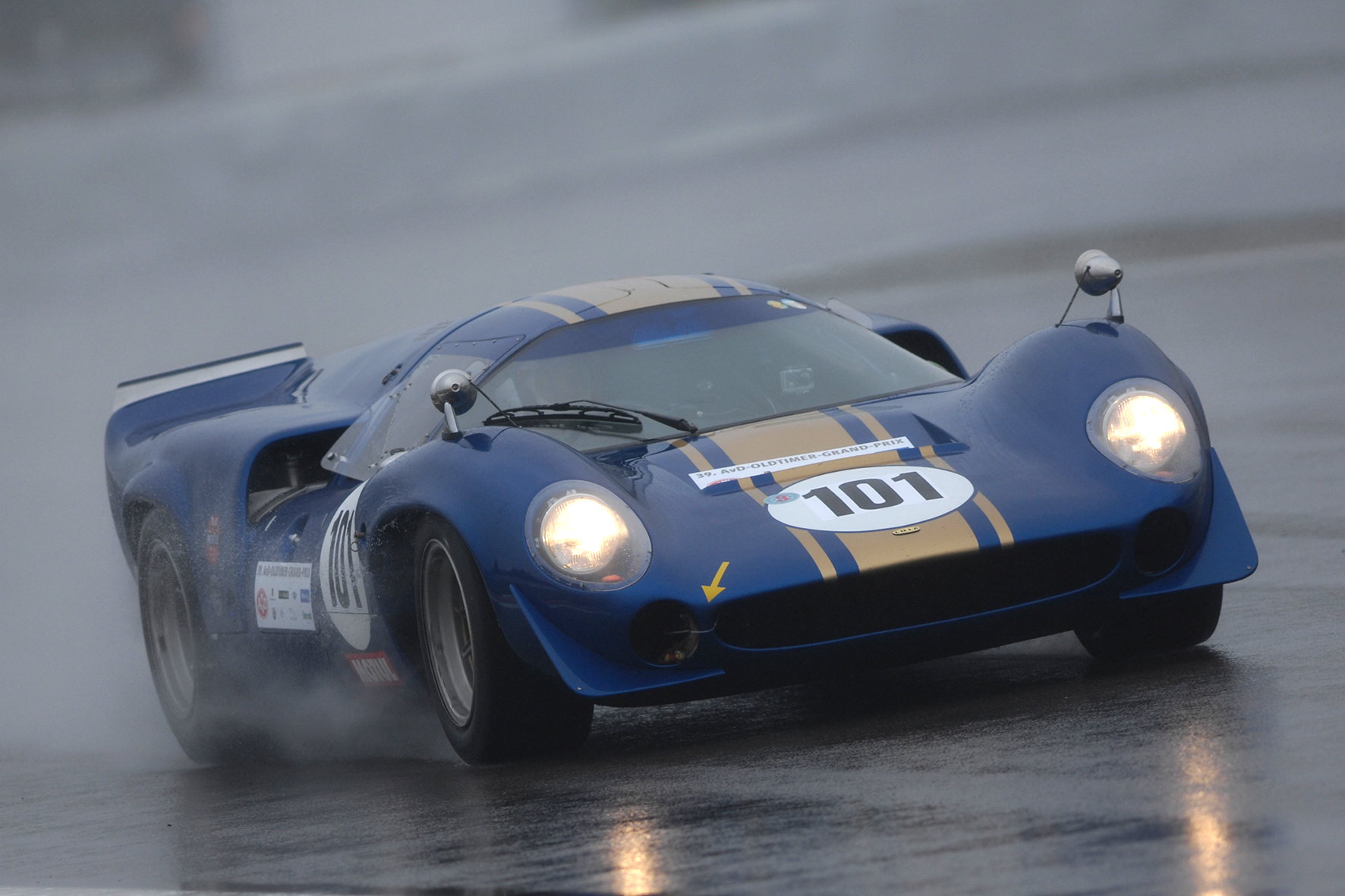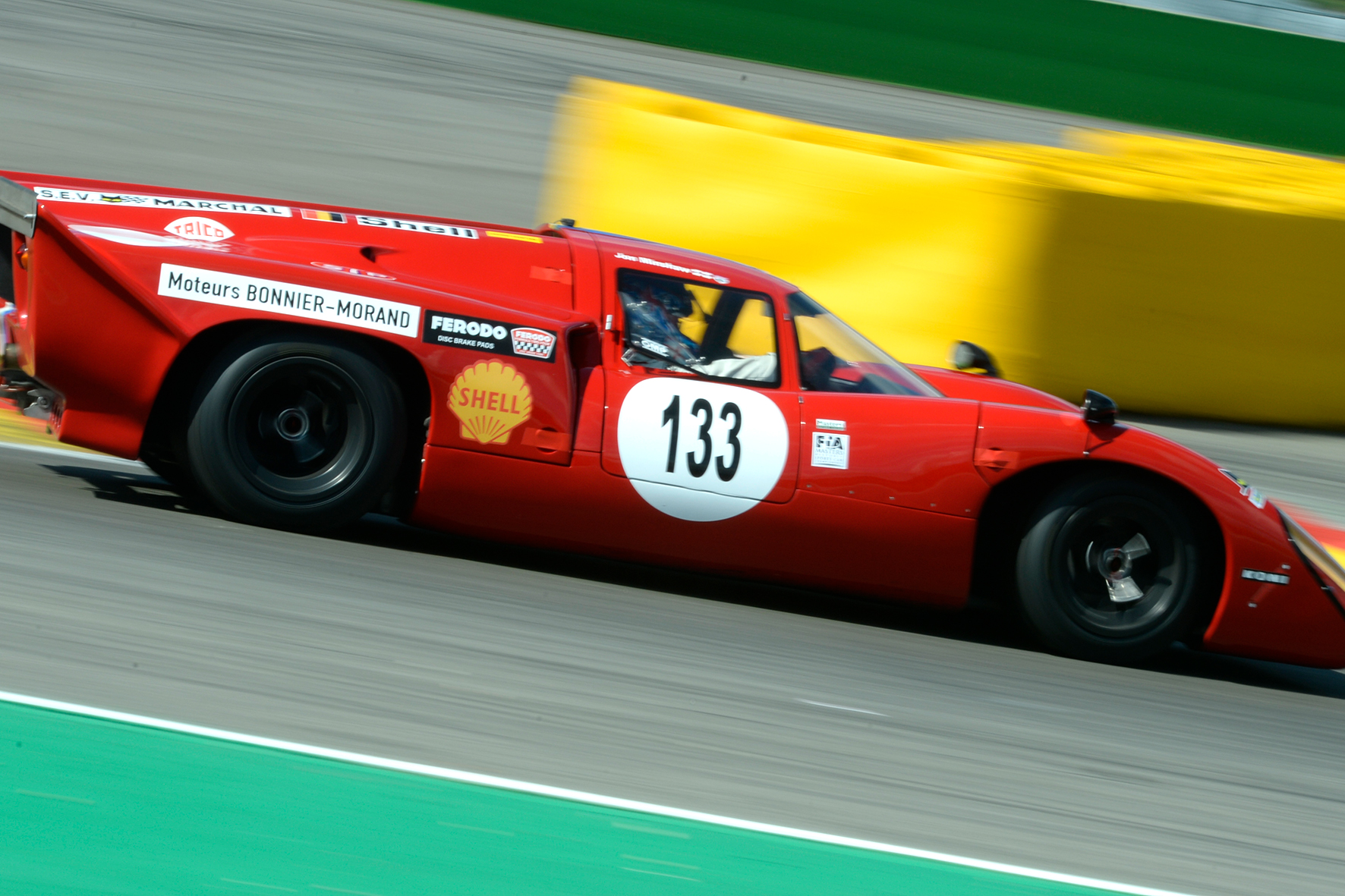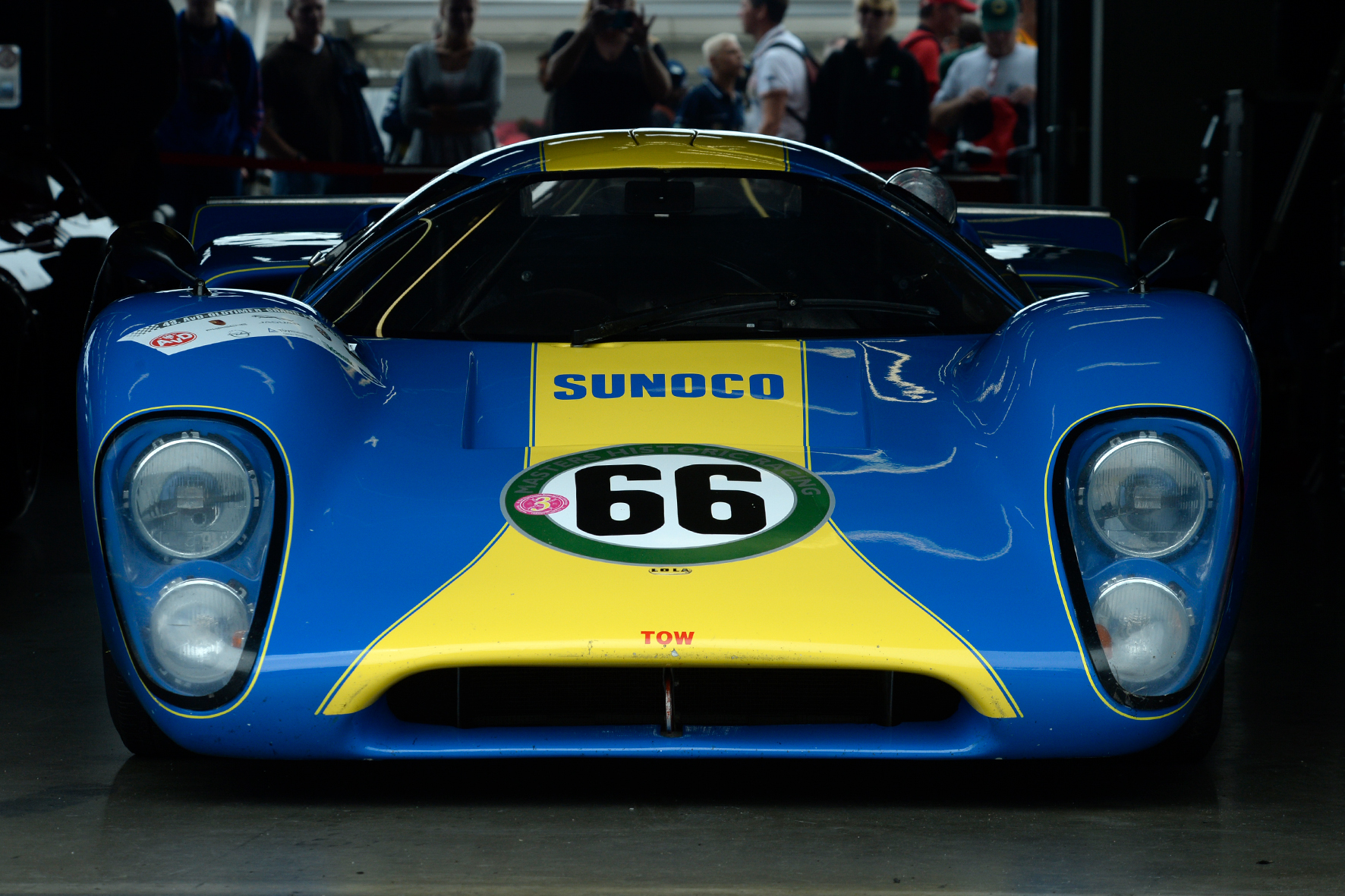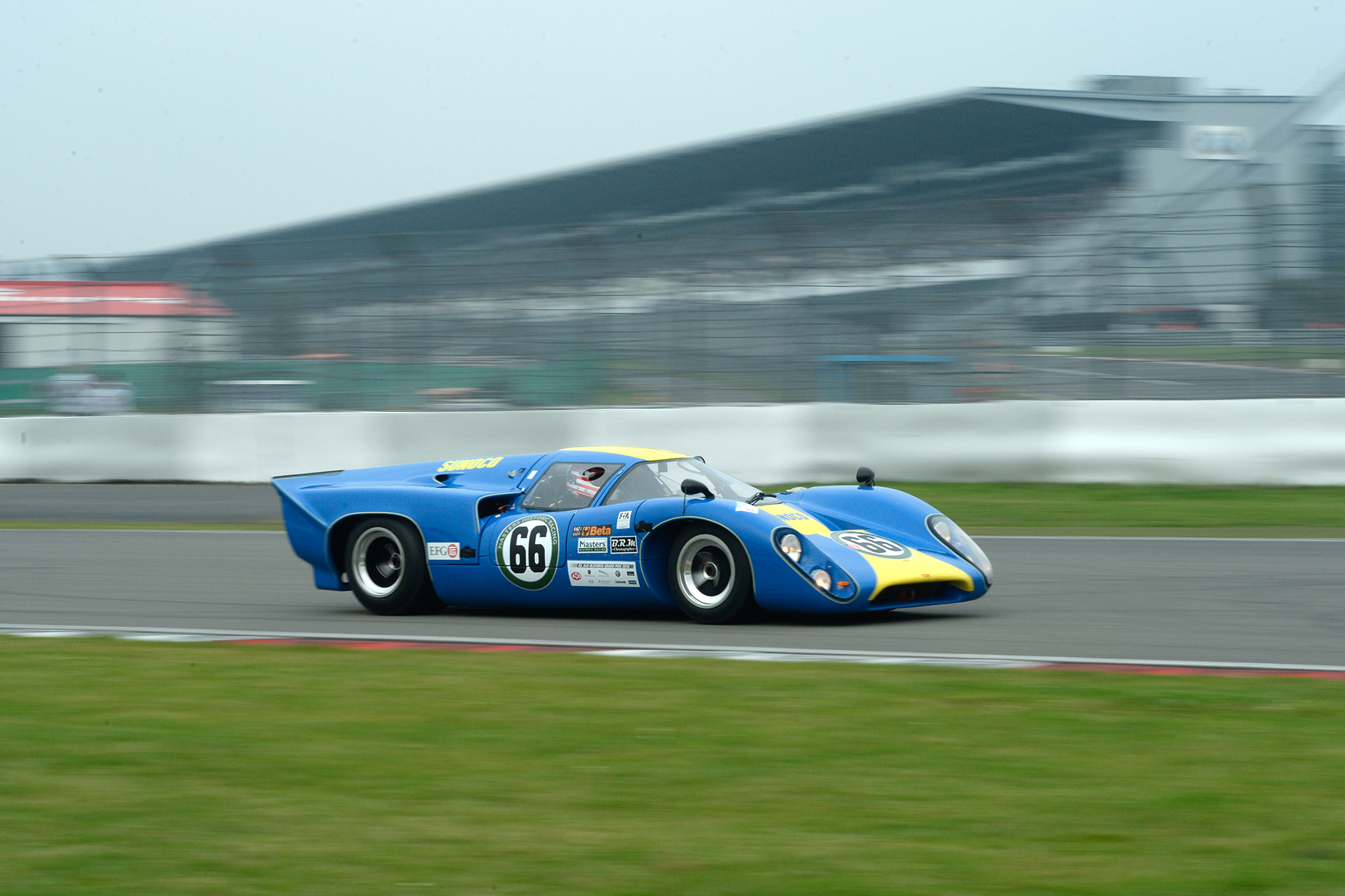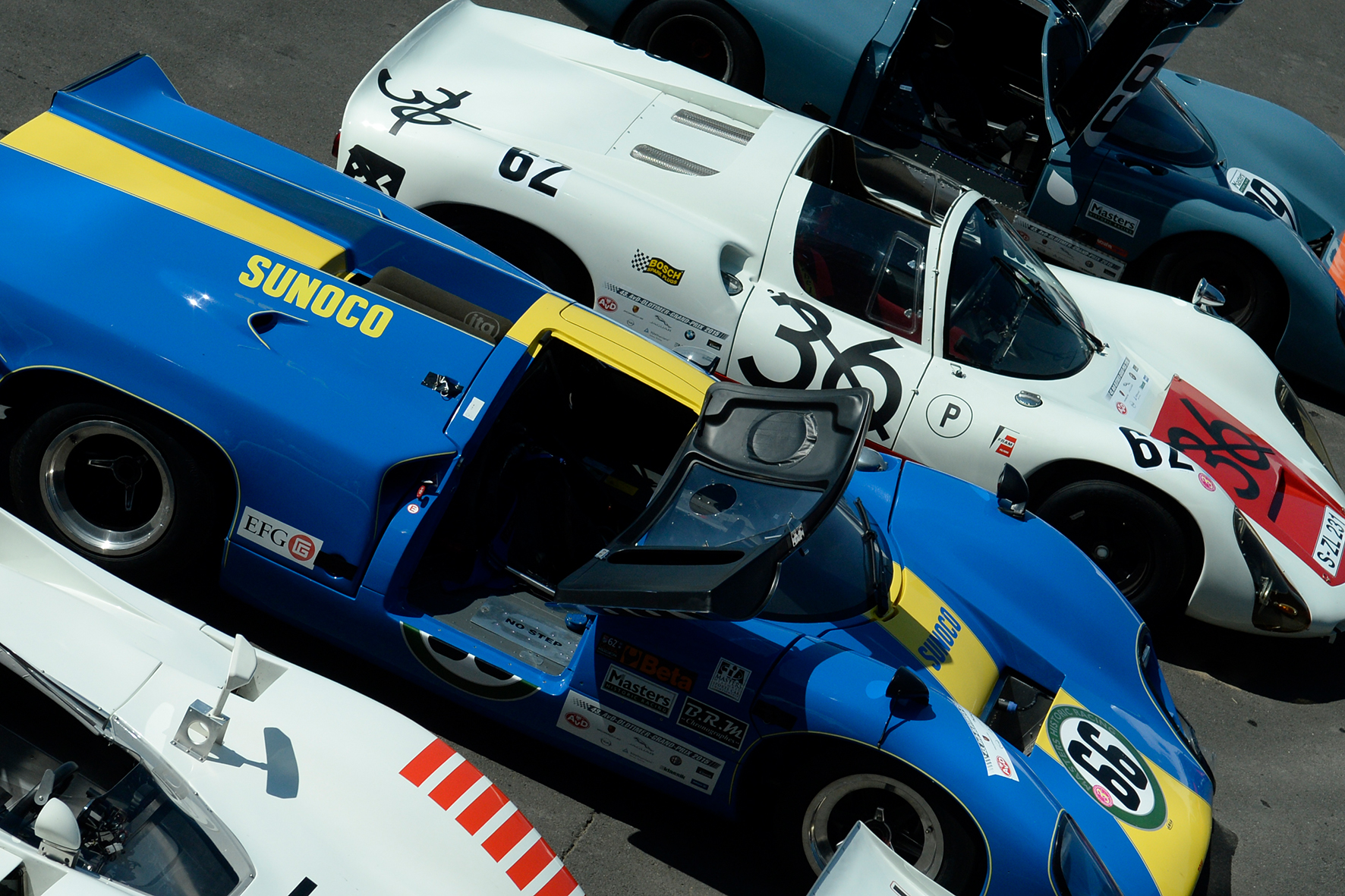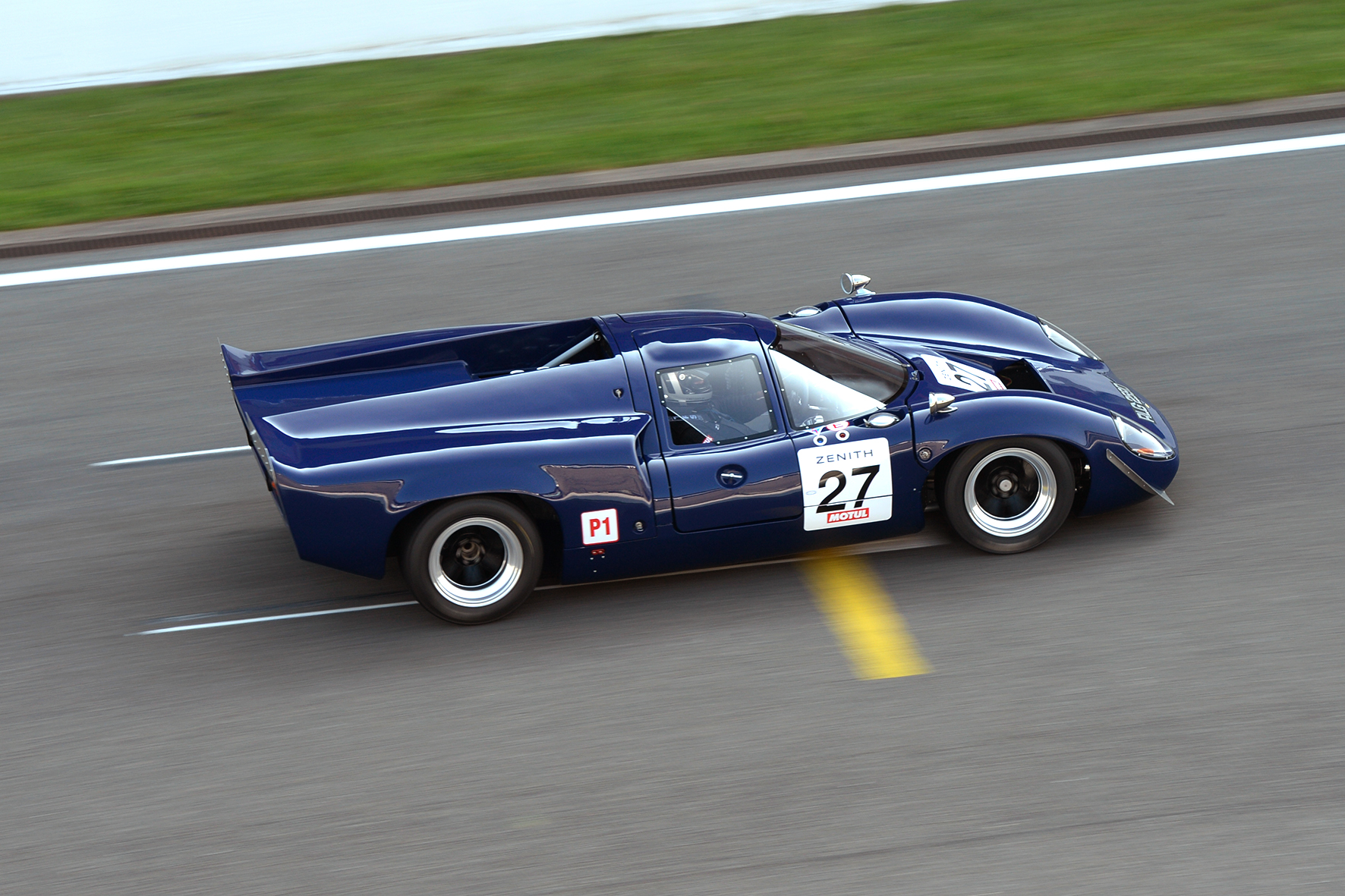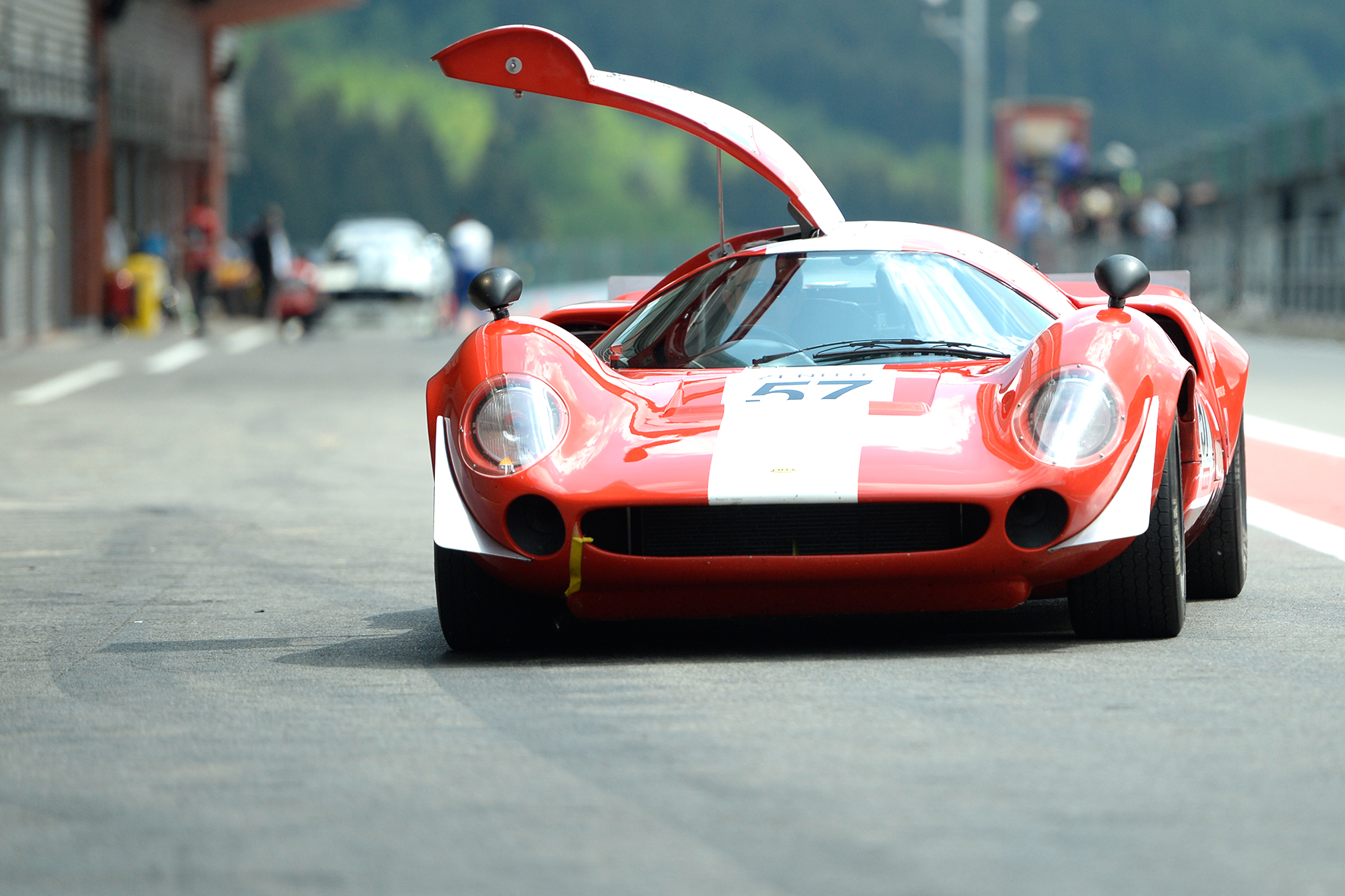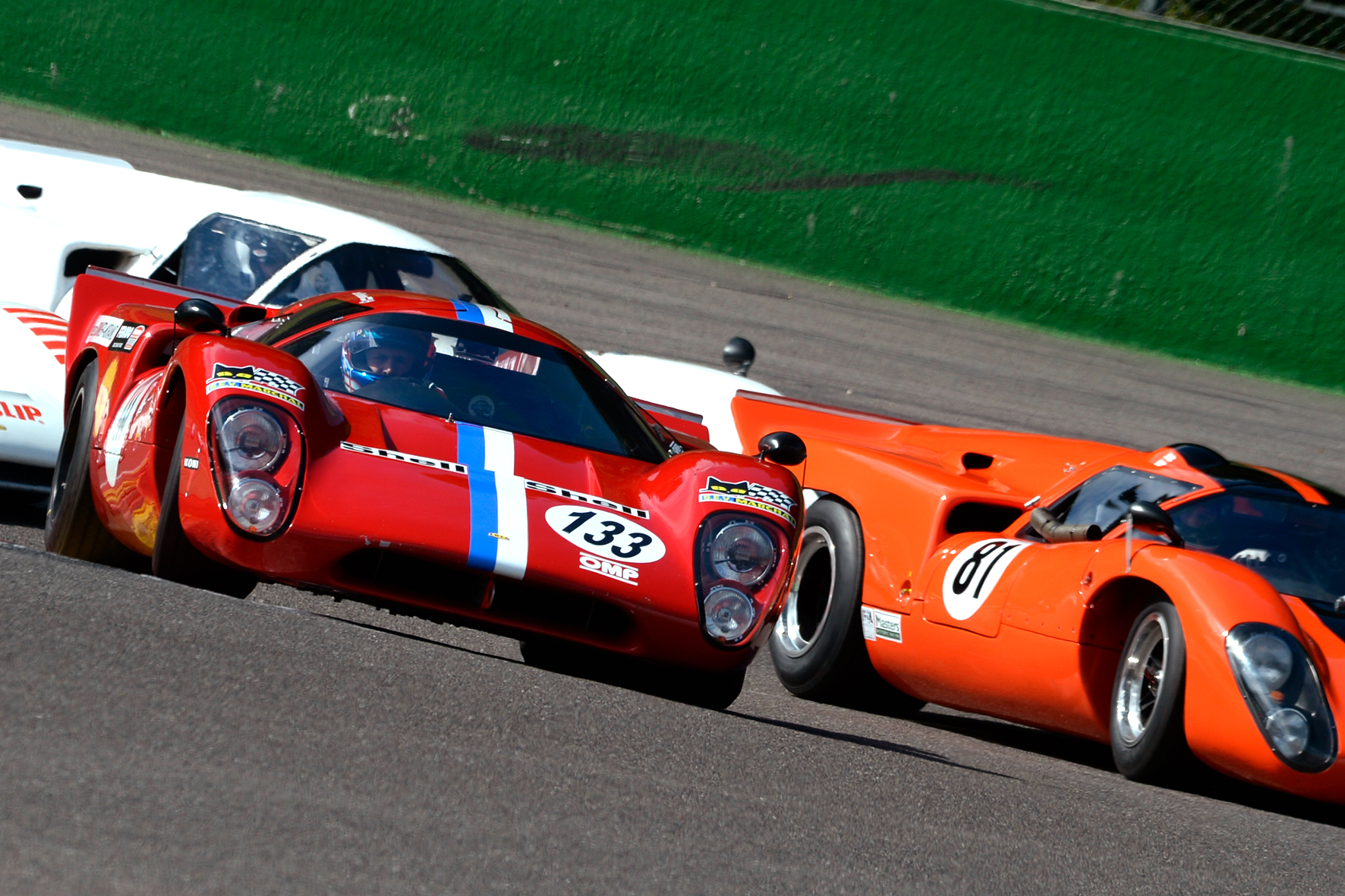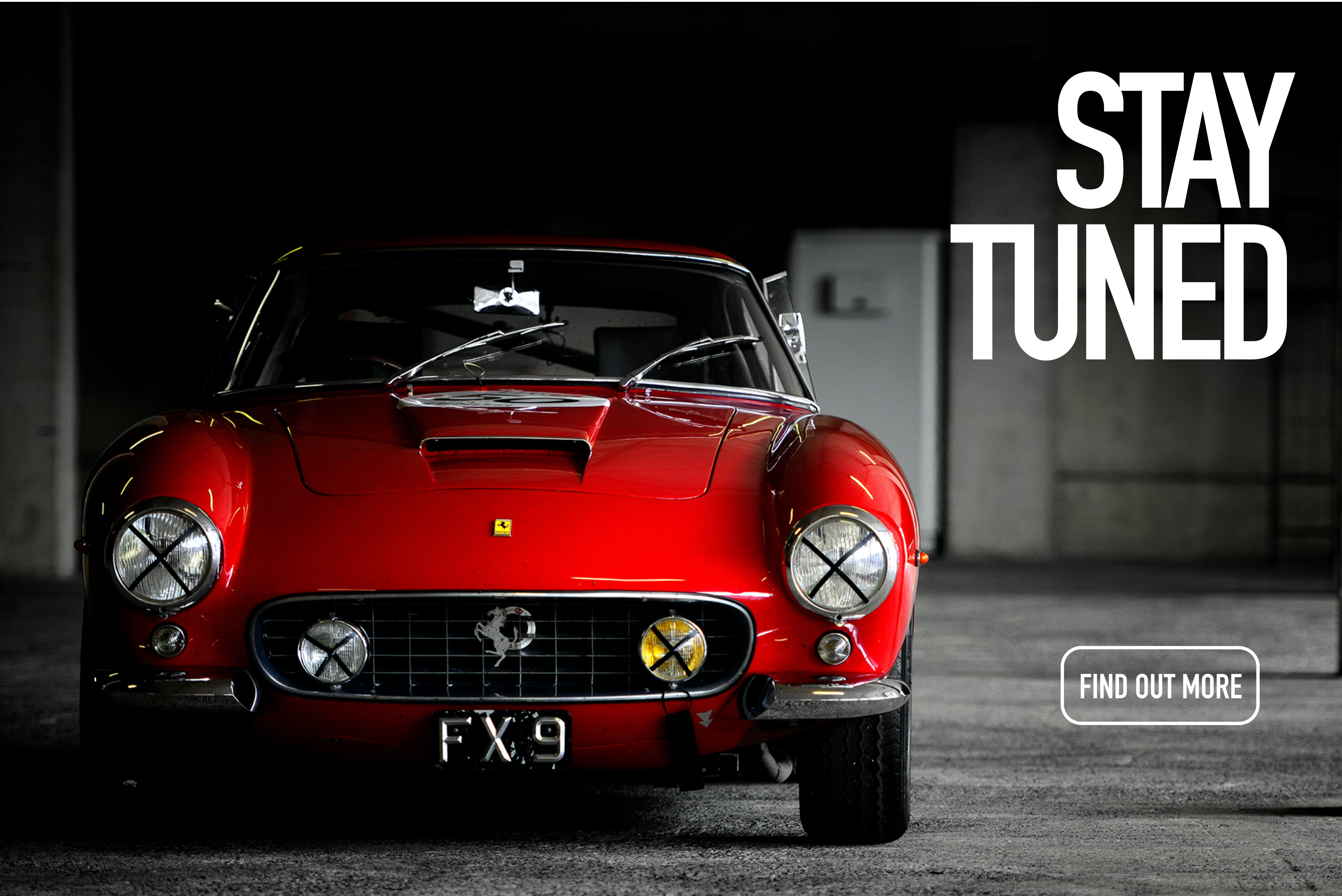The Lola T 70 is a Spots Prototype developed by the British car manufacturers Lola Cars in 1965. Lola built the chassis which was typically powered by large American V8 engines. The T 70 was quite popular in the mid to lat e 1960’s. More than 100 examples of this tremendous car were built in three different versions. The open roofed Spider, Mk.II, was followed by the Mk.III Coupé and finally by a slightly modified version, the Mk.IIIB.
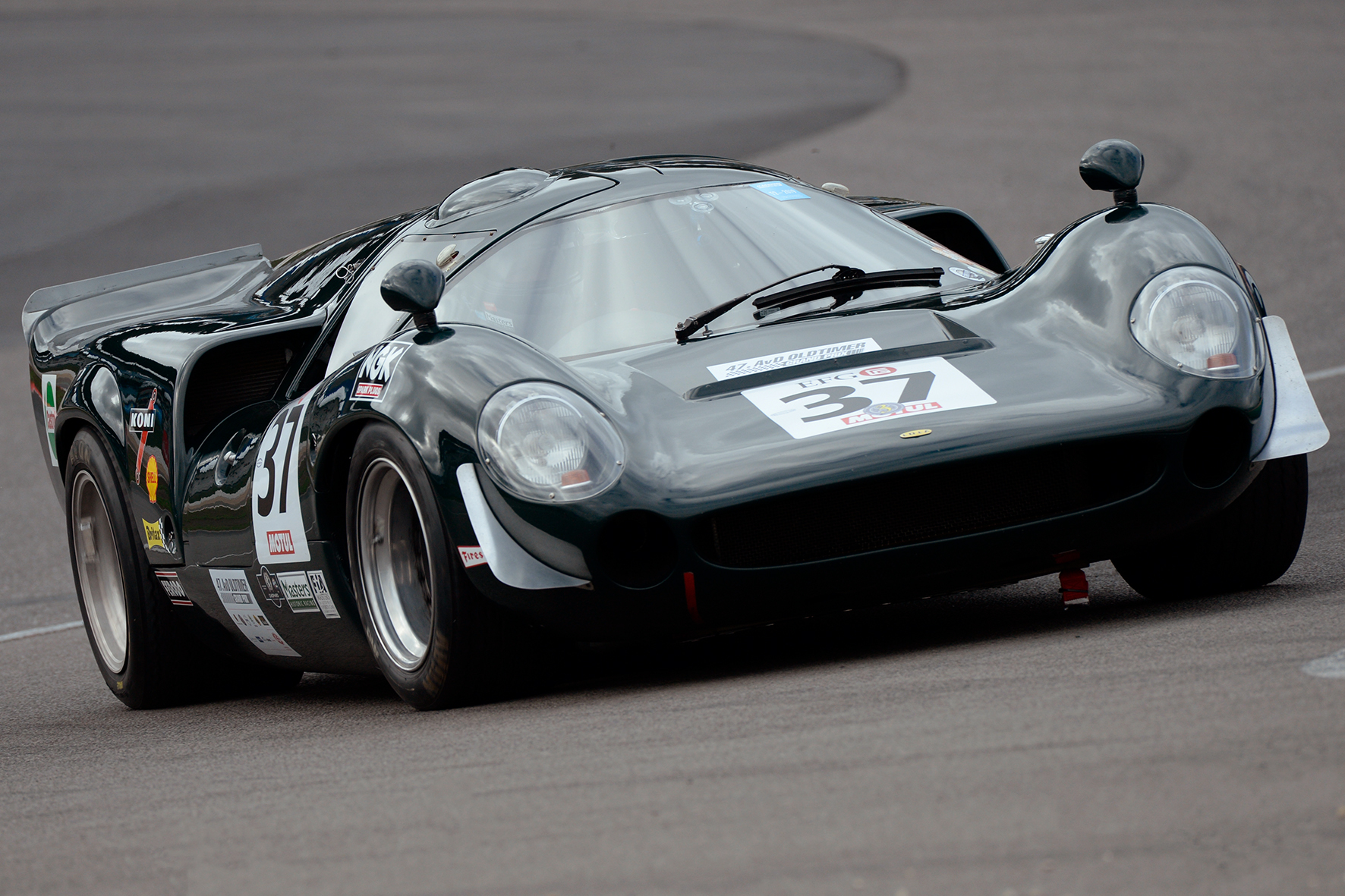
An early success for the Lola T70 was winning the Monterey Grand Prix at Laguna Seca Raceway in 1965 with Walt Hansgen. In 1966 the hottest car in the Can Am series was the Lola T70, he won five of six races during the season. John Surtees was champion and Dan Gurney drove the only T70 powered by a Ford engine which was ever won a Can Am race. In 1967 the new McLaren M6 was unbeatable, so this year ends up with no win for a T70.
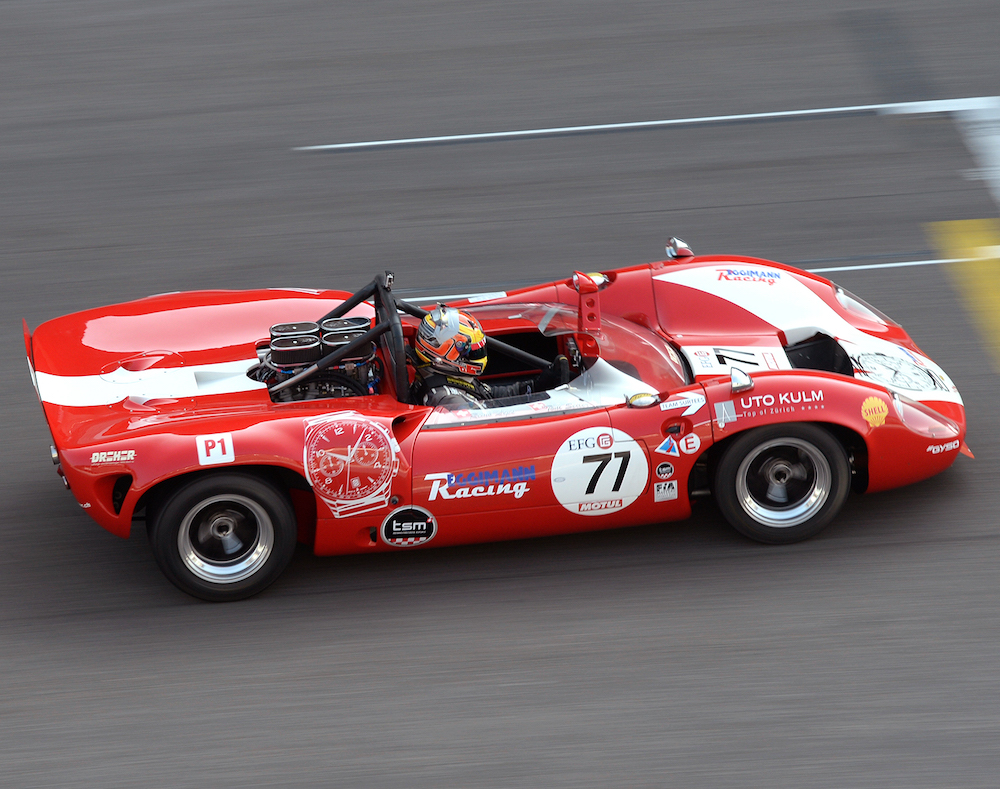
When the FIA changed the regulations for the 1968 season of sports prototype racing to a limit of 3-litre engines, the Lola T70 and the Ford GT40 were allowed because there are more than fifty cars build. The Ford GT40 won the 24 hours of Le Mans again in 1968 and `69 while the T70 took only a one two finish at the 24 Hours of Daytona in 1969 with the Sunoco Lola T70 Chevrolet driven by Mark Donohue and Chuck Parsons.

When the minimum number of produced cars was lowered to 25 items the new and more state-of-the-art Porsche 917 and the Ferrari 512 S came on stage and were homologated to outran the much older Lola’s and GT40’s.
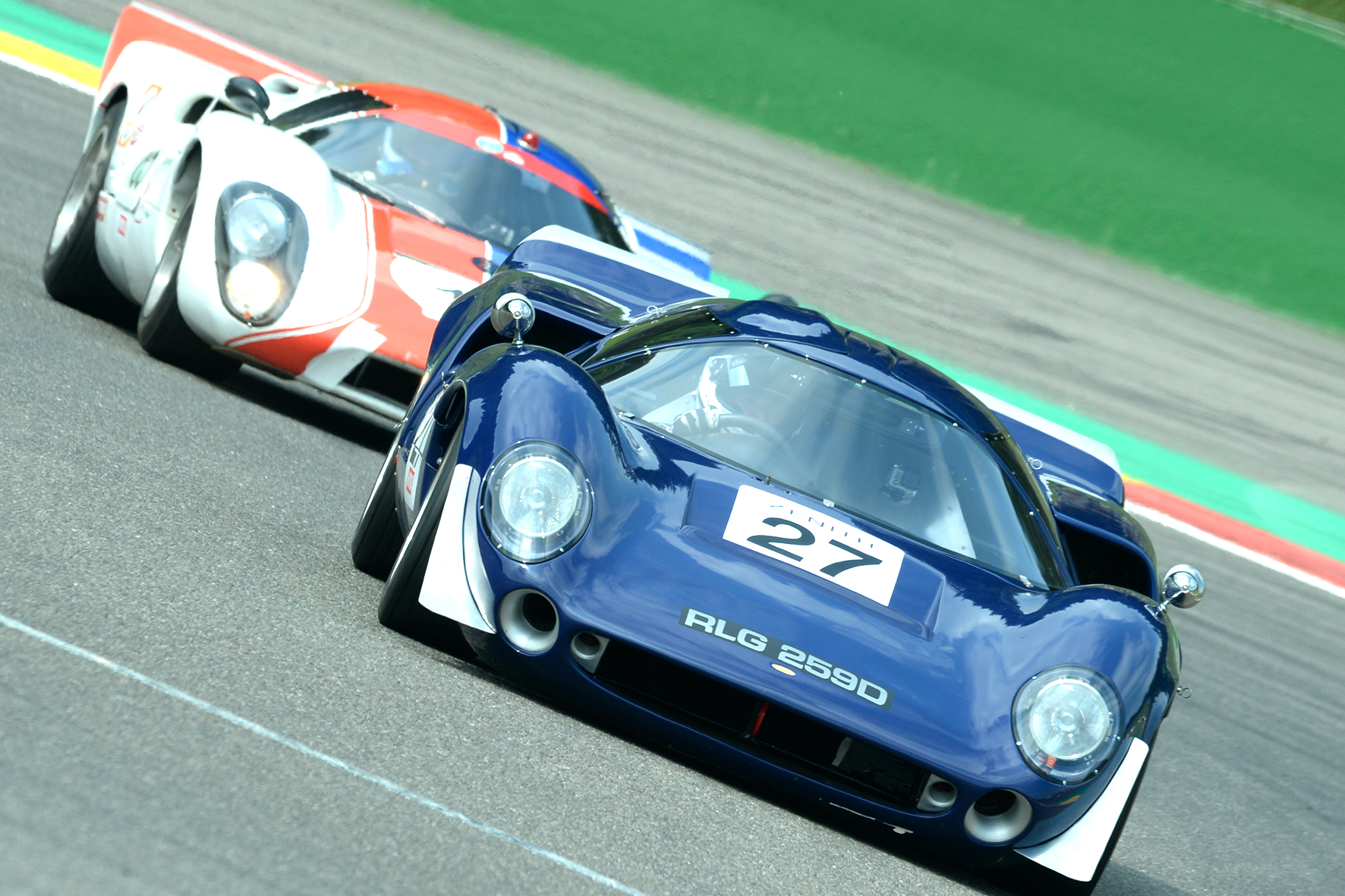
Chevrolet powered T70 coupes tended to suffer reliability problems when racing in Europe, in part due to the grade of fuel allowed. When forced to run on commercially available “pump fuel”, engine failures were common.
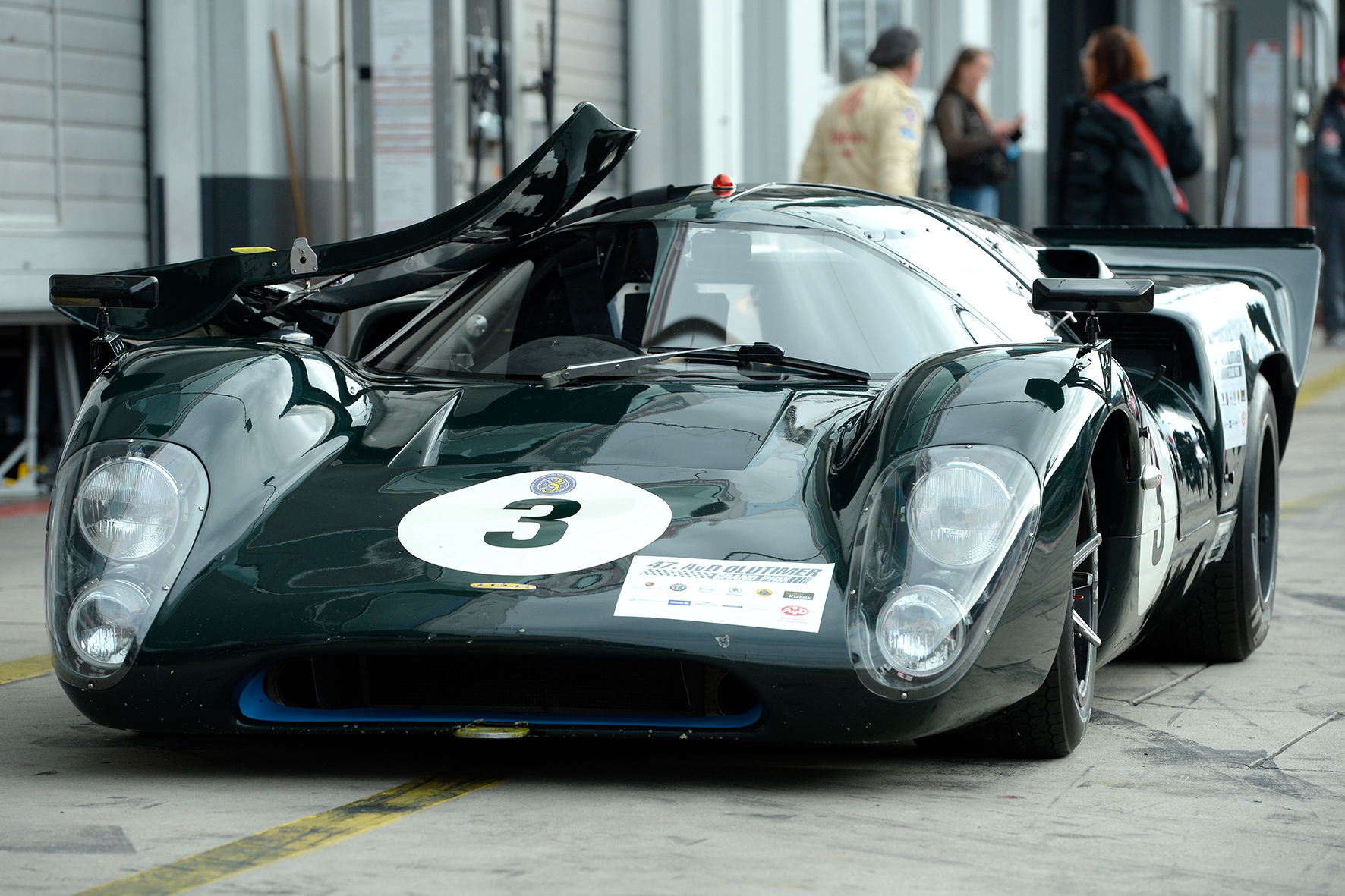
A T70 Mk. IIIB driven by Mike D’Udy was used to set a South African land speed record, with a two-way average of 191.80 MPH and one-way best of 195.96 MPH, on 13 January 1968. The required runs were made on a section of the R45 between Vrendenburg and Hopefield. This record stands until 1988 for South Africa.
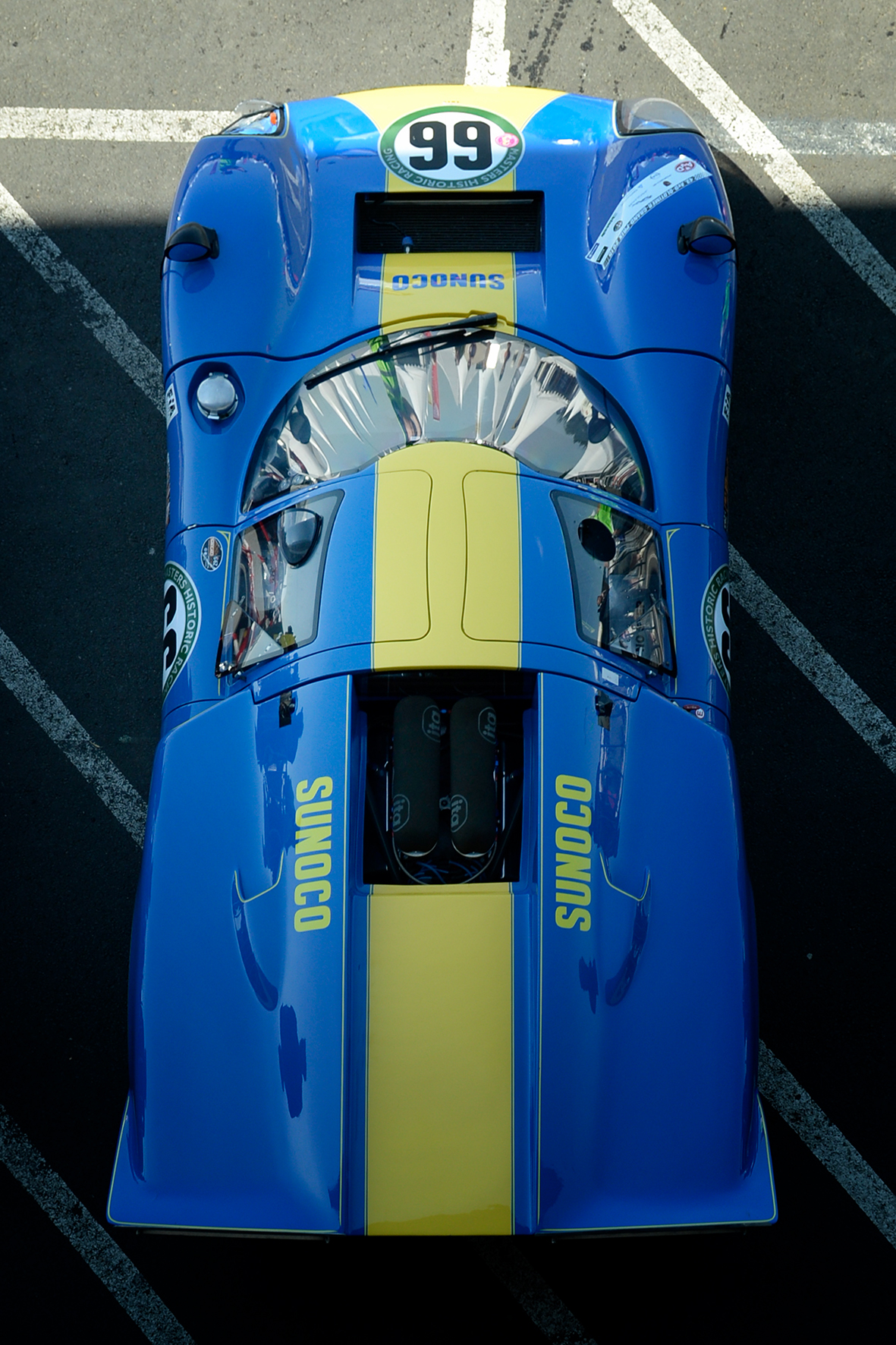
In nowadays historic racing, the engines of the T70 show much improved reliability due to parts unavailable in the 1960s and better fuel quality than the historically poor petrol supplied by the ACO. At Historic Motor Racing events the Lola T70 is an often seen guest and in opposite to his real racing career the Lola’s are very successful. The are most of the times the fastest cars on the grid, dominating both, qualifying and race.
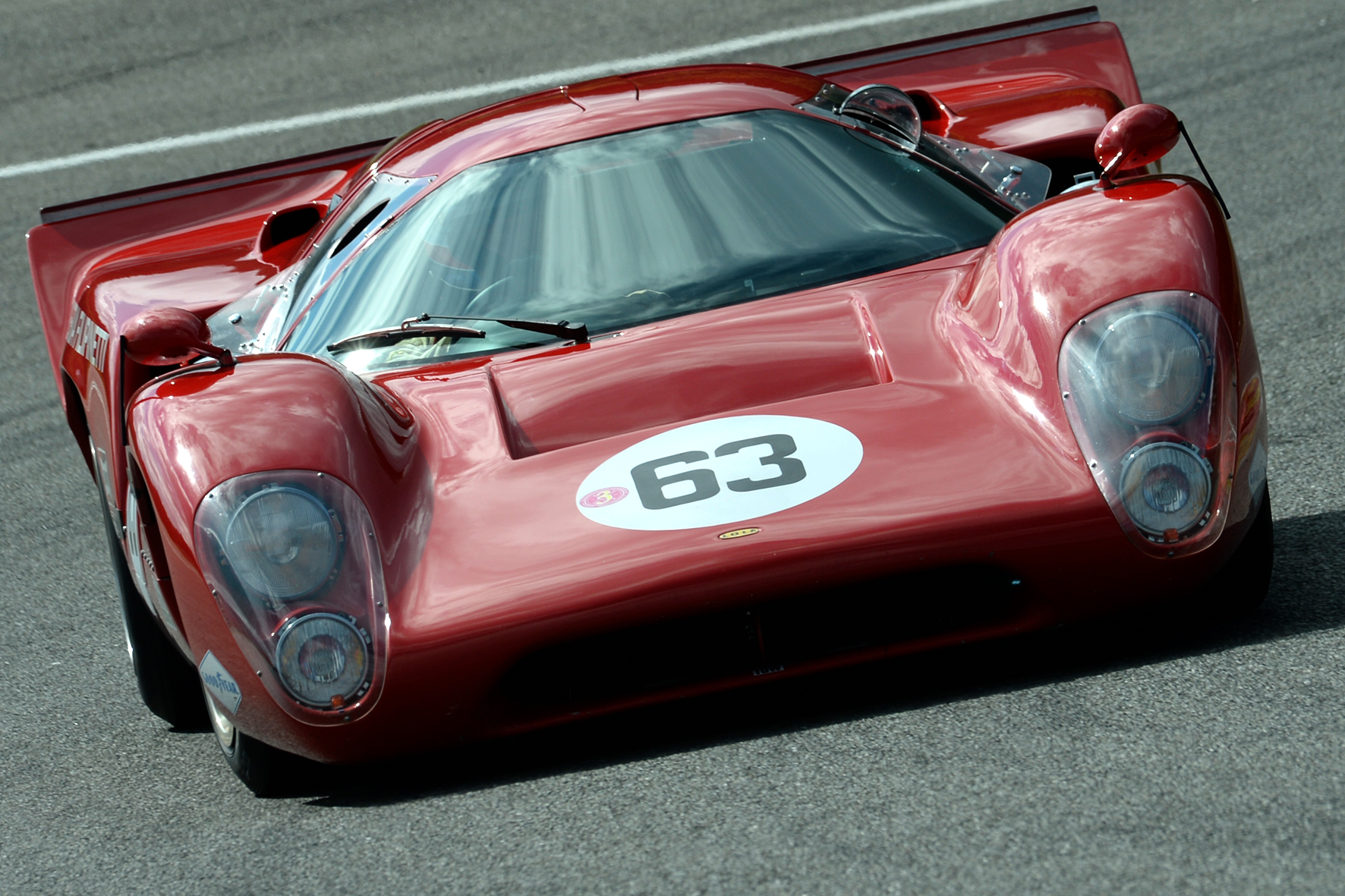
One of the most beautiful T70 ist the typical mid green painted David Piper Lola’s with the large „Sandemann“ stickers.

A British company, Broadley Automotive, makes T70 Mk3B replicas using original moulds and drawings. So authentic they have been granted FIA Historic Technical Passports (HTPs), a number of these Broadley T76s can be seen racing in the FIA Masters Historic Sportscar Championship, where they regularly compete alongside original T70s, Ferrari 512s and Porsche 917s for outright victories.

During the shooting of Steve Mc Queen’s Le Mans motion picture Lola T70 chassis were used as chassis for the Porsche 917 and the Ferrari 512S which should be destroyed by crash in the movie. It is claimed chassis T76/141 originally campaigned by Ulf Norinder and Jo Bonnier was used for the wrecked Gulf Porsche. A doubtful honor, I think. Find out more about our photographer Ralph Lüker.
Lola T70 Mk.IIIb: TECHNICAL SPECIFICATION
MODEL T 70 Mk.IIIb
TYPE Sport Prototype
YEAR OF PRODUCTION 1968 – 1970
TOTAL NUMBER OF BUILD CARS all versions more than 100
ENGINE different American V8 such as Chevrolet
CUBIC CAPACITY 4995 cc
BORE AND STROKE. 102 mm x 76,2 mm
TRANSMISSION manual 5-speed gearbox
HORSEPOWER 450 bhp at 7000 rpm
BODY STYLE Coupé
BRAKES Discs all around
LENGTH 4200 mm
WIDTH 1850 mm
HEIGHT 950 mm
WHEELBASE 2413 mm
TRACK FRONT / REAR 1448 mm / 1460 mm
WEIGHT WITHOUT FUEL 800 kg
MAXIMUM SPEED 320 km/h


